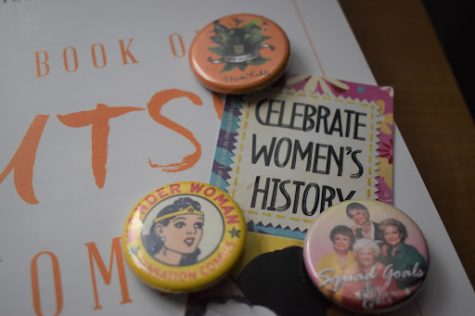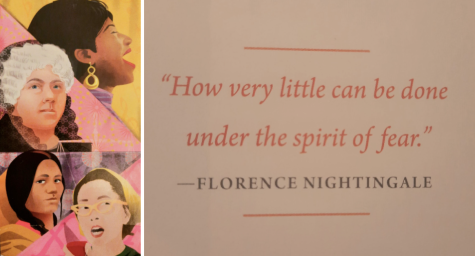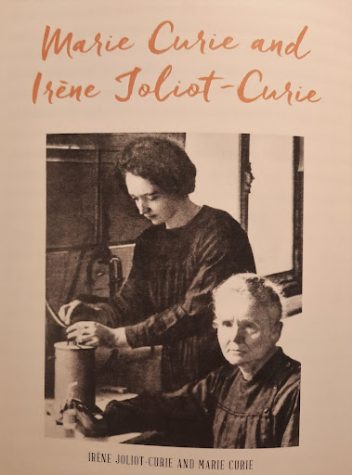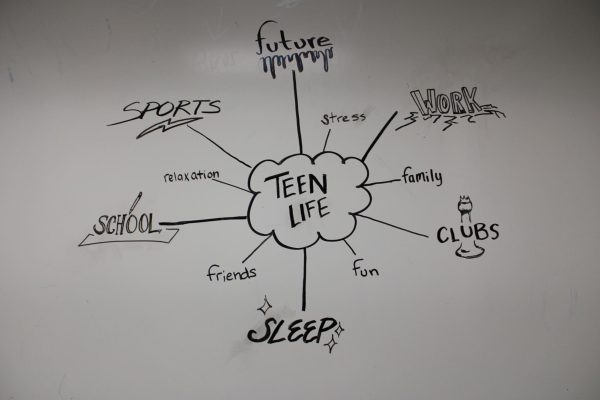March: Women’s History Month
Women’s History Month and International Women’s Day give women in history and women today a time and place to be recognized.
March is a month of spring, snow (if you reside in Colorado), and St. Patrick’s Day. But it is also Women’s History Month. Recognized nationally, the celebratory month sprang from a weeklong celebration started by a school district in California.
According to the National Women’s History Alliance and National Women’s History Museum, the Education Task Force for the Sonoma County Commission in Santa Rosa, California, designated the week of March 8th — a day already declared “International Women’s Day” — as Women’s History Week. To observe that declaration, a variety of schools put special curriculums in place to observe the newly labeled week. From special presentations to an essay contest to a finale parade at the end of the week, Women’s History Week was embraced by the community with open arms.

After the success of the week, other communities including the all-girls college Sarah Lawrence, likewise adopted “Women’s History Week” the following year and decided to lobby for a national sanction for the week. Success came quickly: in 1980, President Jimmy Carter officially pronounced Women’s History Week from March 2nd through March 8th. In his announcement, Carter calls out American women in history, quoting Dr. Gerda Lerner’s saying that “Women’s History is Women’s Right.” He urged women’s history to be taught and promoted the ratification of the 27th amendment: the Equal Rights Act.
“From the first settlers who came to our shores, from the first American Indian families who befriended them, men and women have worked together to build this nation. Too often the women were unsung and sometimes their contributions went unnoticed,” said Carter in his 1980 speech. “But the achievements, leadership, courage, strength and love of the women who built America were as vital as that of the men whose names we know so well.” Each year, similar proclamations designated Women’s History Week were made by each president, until 1987 when Congress officially designated the entire month of March as “Women’s History Month” and passed laws requiring presidents each year to do the same — though notably, none of these proclamations have yet been given by a woman.
Similarly, each year, the National Women’s History Alliance chooses the theme for Women’s History Month. The 2022 theme? “Women Providing Healing, Promoting Hope”: a fitting choice for the year following both 2020 and 2021. On their site, the NWHA explains the choice of theme as a tribute to caregivers and frontline workers in particular, also recognizing the major role of women as healers and caregivers throughout history and across cultures. Beyond the theme, though, the month as a whole carries significance for many.
“To me, Women’s History Month and International Women’s Day is a time to celebrate the beauty of women. Even though women deserve to be celebrated every day, it’s nice to know there’s a day dedicated to us,” said Etsub Worku, a leader of Eaglecrest’s Habesha Club. “It’s a reminder to the world that women do deserve the respect and equality they continue to fight for and are capable of accomplishing anything regardless of gender.” Gender inequity has undoubtedly been a struggle throughout history and across cultures — and not an easy one. From Emmeline Pankhurst to Billie Jean King to Malala Yousafzai (and everyone in between), the fight towards equity has been a marathon, not a sprint.

“Women’s History Month allows us as a society to recognize and draw attention to amazing women around us and in history,” said junior Betanya Esayas, a foundational member of Team R.E.D. at Eaglecrest. “Being a woman to me means being yourself. Oftentimes there are boxes that you feel like you have to fit yourself in. You don’t! Do what makes you happy.”
The label of “woman” inevitably comes with a long history and a load of expectations. And while the same could be said for a “man”, the connotations can be quite different. Women’s history and historical figures are far more vague and underrepresented in most cases.This seems to be true throughout the globe. International Women’s Day, regularly occurring on March 8th, thus serves as a day to call out notable women.
“For me it is a day to take a closer look at the women who have been sidelined throughout history,” explained senior Elizabeth Carlsen. “Since women don’t often get recognized historically, having a day to give attention to the overlooked lives of women is important to me, as well as recognizing the wonderful work women are doing right now.” This year’s International Women’s Day theme, “Break the Bias” seeks to call out gender bias while highlighting the work of women across the world. International Women’s Day and Women’s History Month also aid women in another way; it puts some additional focus on them, which allows many to examine just what it means to be a woman.

“To me, being a woman means being a valued member of society. Regardless of how much I can be underestimated, I know I can work towards abolishing double standards that are forced on me and others and that brings me a lot of pride,” said Worku. And of course, it is not just women who are encouraged to support women. Working towards equality — and certainly, significant progress has been made in the past century — means everyone working together, no matter their gender.
“One day will, of course, not make up for or fix the way women are overlooked in society,” noted Carlsen. “But having a specific date to acknowledge the strength and significance of women is certainly a step in the right direction.” Though not always validated, a feminine identity holds a unique power — an unparalleled, indescribable strength.
“From what I’ve seen from the women in my life it means being kind, being willing to work hard, and being resilient,” said Carlsen. For pretty much any girl growing up, there will be a woman or two (or three or ten) who serve as role models, guides, and most of all, inspirations.
“To me, it would have to be my mom. Between juggling a great career and taking care of our family, she looks like Superwoman,” said Esayas. “I don’t know how she gets everything [done] she does in 24 hours.” Such role models can range from relatives, pop culture icons, notable historical figures, and so much more.
“The three women I’ve always looked up to are my mom, Michelle Obama, and Katherine Johnson,” said Worku. “They’ve all faced adversity in different ways and come out of it as stronger people who’ve made lifelong impacts on whoever they cross paths with.” Strength through adversity — though without sacrificing sensitivity and compassion — seems to be a commonality among inspirational women. Another example: founding women in STEM.

“Marie Curie hands down; as a fellow science nerd I admire her not only for pioneering research into radioactivity but also for not letting her accomplishments be hidden behind the name of her coworkers or her husband,” said Carlsen of who inspires her.
Women — no matter culture, class, or career — deserve to be recognized and celebrated. And Women’s History Month is an ideal time to do so. “This month is a time to reflect and appreciate all the women in our life,” said Worku. “We wouldn’t be where we are today if it wasn’t for them.”

Simone Beauchamp is a Senior at Eaglecrest and, as she will let you know, she graduated from Challenge Middle School. She has many talents - photography,...











